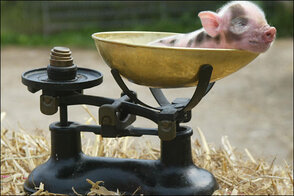 I think it is fair to say we get a lot of our ideas for blogs from Twitter and other social media sites, especially those used by authors. Be careful what you post, because you might well get a mention here. Not by name, of course. We would never do that. So it is this week, with a Tweet we saw a few weeks ago from an author (we sometimes write our blogs several weeks in advance of their publication). The Tweet was actually in two parts. The first part related to the way an author’s book sales had fallen off over recent weeks. By ‘sales’ we also mean KENP read using KindleUnlimited etc. A blog we posted a couple of weeks ago covered some of the reasons why sales vary on a seasonal basis, so we won’t cover that ground again (scroll down a bit if you want to find out more). But, of course, it’s not just the season of the year that affects sales.  We like to think of book sales a little bit like the way we think about tending houseplants. If you give a houseplant just the right amount of attention at just the right time, it should flourish. Well, a healthy plant in a disease free environment should live a long and happy life if it is given the right care and attention. But if you don’t give the plant the right care, or enough attention, or you give it at the wrong time, it will die. The same applies to giving it too much attention. The phrase ‘killing with kindness’ may have been invented for houseplants (if it wasn’t, please don’t email to tell us – put it in a blog of your own).  So it is with marketing a book. Given the right attention at the right time, your books should still sell even if seasonal factors are against you. That’s providing they are readable, of course – it’s hard to sell a poor quality book, ie one that has a ‘disease’. If you don’t do enough marketing or you do it at the wrong time or in the wrong way, your books won’t sell. And you can do too much marketing, killing the book with kindness so to speak, because readers get fed up with seeing your marketing efforts. Our response to the Tweet we saw was to suggest the author think about taking a look at her marketing strategy to decide what might be needed to lift her sales. The second part of the Tweet was about the author’s fixation with checking her sales data on KDP. She seemed to be looking very five minutes (I may be exaggerating) but she knew it wasn’t healthy.  For Indie authors I can quite understand the need to constantly check sales data. Sales provide validation for the author that their book is ‘good enough’. An author who has an agent or a mainstream publisher doesn’t need that sort of validation. They have already had their fix by getting the agent and/or the publishing deal. But for Indies there is little other than sales data to tell them that readers like their books. Reviews are the other form of validation, of course, but they are opinion based and therefore subjective, whereas sales data is empirical. Numbers don’t have an opinion. To paraphrase an old business saying: reviews are vanity, sales are sanity.  You don't fatten a pig by weighing it. You don't fatten a pig by weighing it. But you don’t fatten a pig by weighing it, as the saying goes (apologies to vegans, Jews and Muslims). Weighing your pig tells you if it’s gaining weight, but if you aren’t using that information to adjust your pig’s diet, then knowing its weight doesn’t achieve anything. OK, it’s a heavy handed metaphor (it was a heavy pig) but it makes the point. Knowing your sales data doesn’t sell more books. Knowing your sales data tells you whether or not your marketing strategy is working. If you aren’t making sales, or not as many sales as you think you should be making, then that is telling you to look at your marketing strategy so you can change it to make more sales. But if you make changes to your strategy, you have to give them time to work. Checking the figures every five minutes doesn’t help. It may just lead to frustration and, in extreme cases, it may actually be harmful to mental health.  By marketing strategy, we don’t just mean your advertising or social media posts. Book covers and blurbs can both have an effect on sales and need to be quality checked to make sure they are doing their jobs. The “look inside” feature on Amazon is also part of your marketing. If you don’t capture the reader’s imagination in those few free pages, you may not make the sale. The way you word your social media posts, what sort of images you use and a whole raft of other considerations also play their parts. We blogged about all of that last autumn, so we won’t go into those again today. If you want to know more, check out our archives under the "marketing" heading. So, Indie Author who inspired this blog, we hope we have reassured you that checking your sales data is actually quite normal. But we hope we have also encouraged you to take the information provided by that data and make use of it, so that your sales will look after themselves and you don’t have to check them so often. If you have enjoyed this blog, or found it informative, then make sure you don’t miss future editions. Just click on the button below to sign up for our newsletter. We’ll even send you a free ebook for doing so.
0 Comments
Leave a Reply. |
AuthorThis blog is compiled and curated by the Selfishgenie publishing team. Archives
June 2025
|
 RSS Feed
RSS Feed